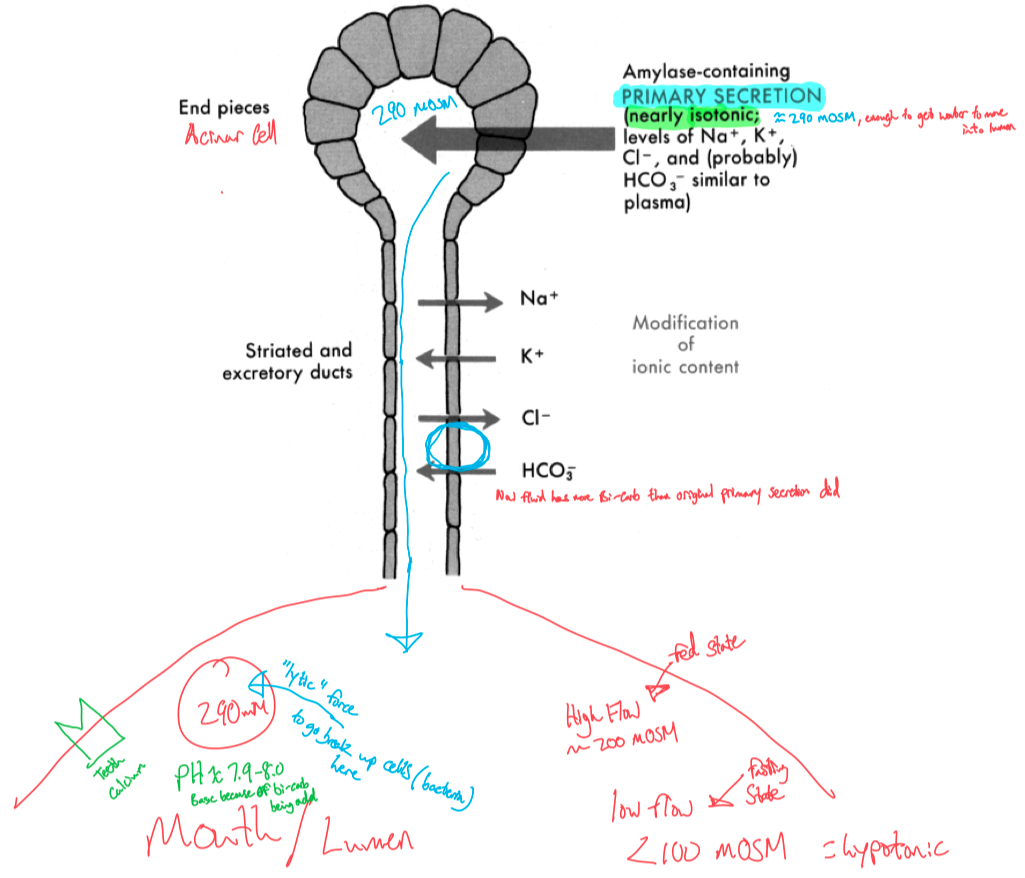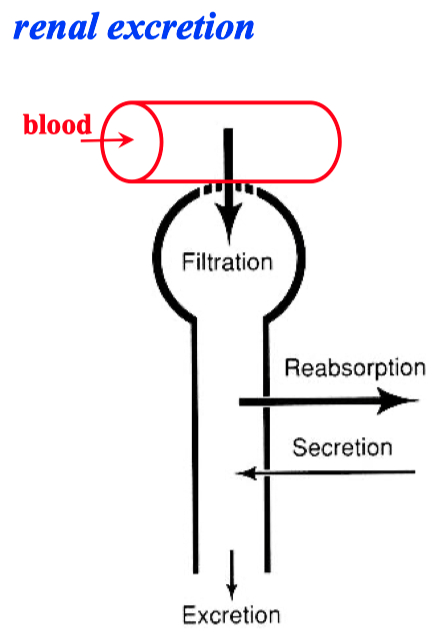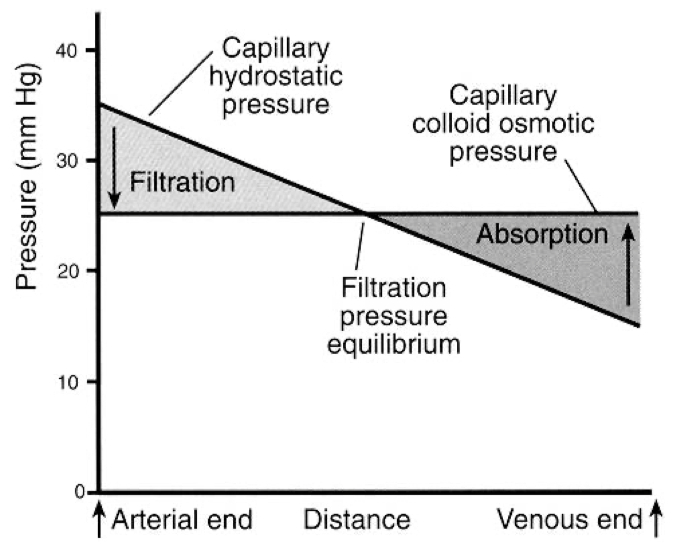
Paracellular Pathway = Filtration
Cellular Pathway = Absorption
Gastro Intestinal System
Channels
Na \ K \ 2 Cl
Cl \ HCO3
K+ Channels
Cl Channels
Na Channels
Na \ Glucose
Serial Processing
Salivary Glands

Creates hypotonic saliva
because we got rid of sodium and chloride
so we have free , disposable water now
If some bacteria or other hyperosmotic cell is around , we can cause it to lyse with the free water
We have acid being secreted , intrinsic factor , pepsin.
all aid in digestion
The microbiome helps digest exogenous starches ( cellulose )
Pancreas : amylase , peptidase , lipase
digests everything
Liver : produces bicarbonate, and bile acids
Small Intestine : passive absorption in brush border membrane : sugars , amino acids , fats
Large Intestine : absorb bulk of fluid
Control
Hormonal and Neural
Cephalic Phase = secreations
Gastric Phase :
G-cells = gastrin
S-cells = secretin
i-cells = CCK
L-cells = peptide-YY
Intestinal Phase = secretin and CCK
Water Absorption Mechanism :
The sodium-potassium pumps create the gradient for chloride to floow
All of that osmole movement makes water follow
Renal System

Kidney is a multistage filter

Arteriole End :
high pressure
filtration
pushes water and solutes out of the capillary
Venous End :
low pressure
absorption
we are left with albumin
high albumin = high amount of protein = high "oncotic" pressure = strong water retention in vessel
where as low protein concentration = low oncotic pressure = water is released from vessel = edema
Nephron :
glomerulus = filter
proximal tubule = absorption of fluid
diluting segment = selective salt absorption
distal tubule = selective water ( or salt ) absorption
Glomerulus :
podocytes support against pressure
has fenestration pores
prevents blood cells and plasma proteins from entering nephron
afferent arteriole = in flow
efferent arteriole = exit flow
Macula Densa = boundary between proximal and distal sections
There are ways the body can autonomically control / constrict both the afferent and efferent arterioles
myogenic response ( Bayliss reflex )
maintains steady hydrostatic pressure of 60 mmHg
The glomerulus can also sense if there is high amounts of NaCl in the lumen , or just high osmolarity in general
it will decrease GFR
Fractional Filtration = portion of fluid filtered at the glomerulus
Filtration = Glomerular Capillaries
Reabsorption = Peritubular Capillaries
Absorbed =
Filtered Amount =
Excreted Amount =
FF = ( amount excreted in urine / amount filtered by the glomerulus ) * 100%
Proximal Tubule
2/3 of all filtrate is reabsorbed in the proximal tubule
You also do bulk of nutrient absorption here
Na , K , Cl , Ca , Mg , PO4 , Glucose
Leave undesired stuff in lumen of nephron
Convolutions = stirring = mixing = increased absorption
Absorption of all of these osmoles is being driven by :
Capillaries = hydrostatic and osmotic
Nephron = oncotic / osmotic
No aquaporins in ascending limb
At the last possible moment , we dump NaCl into intermedullary space
Urea enters inner meddula from IMCD
ADH causes distal nephrons to insert aquaporins
allows for water reabsorption when you are dehydrated
ADH also decreases the NaCl absorption
Diabetes Insipidus = lack of ADH release = urinate tons of water
RAAS =
Anion Gap = [ Na ] - ( [ Cl ] + [ HCO3 ] )
we can measure sodium and bicarbonate
and then indirectly calculate the "gap" of what the concentration of anions MUST be
its a neutral solution
New Bicarbonate = produced by the kidneys and then added to the blood
Volume Contracted = excrete more bicarb
Volume Expanded = stop secreting bicarb
Vomitting = loosing volume and acid
Diarrhea = loosing volume and base
A-Type = acid secretion and bicarbonate reabsorption
B-Type = bicarb secretion
If you were to exhale a bunch of CO2 , you might deplete the pool of CO2 needed to make bicarbonate ,
transport slows down